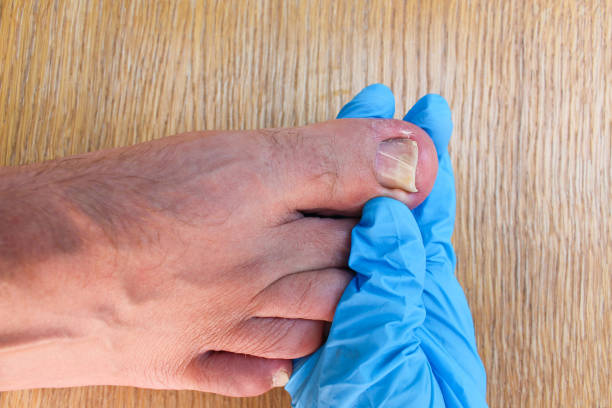An ingrown toenail occurs when the edge of a toenail grows into the surrounding skin, causing pain, redness, and swelling. This condition can be uncomfortable and, if not treated properly, may lead to infections. Fortunately, Chicago foot doctors are well-equipped to offer effective treatments for ingrown toenails. In this blog post, we’ll explore the various treatment options available and when to seek professional help.
Home Remedies for Mild Ingrown Toenails
Before considering medical intervention, some individuals may find relief from mild ingrown toenails through home remedies. Here are a few approaches that Chicago foot doctors recommend:
1. Soaking the Affected Foot
Soaking your foot in warm, soapy water can help reduce swelling and soften the skin around the toenail. A soak of 15-20 minutes can also help alleviate discomfort and make it easier to manage the area.
2. Antibiotic Ointments
If you notice redness or swelling around the ingrown toenail, applying an over-the-counter antibiotic ointment may help prevent infection. After applying the ointment, cover the area with a clean bandage.
3. Proper Nail Trimming
Keeping your toenails properly trimmed can help prevent ingrown toenails from worsening. Trim your nails straight across and avoid rounding the edges. This can help the nails grow in a healthy direction.
Professional Treatments for Ingrown Toenails
If home remedies do not provide relief, or if the ingrown toenail worsens, it’s essential to seek professional treatment. Chicago foot doctors offer several effective treatment options:
1. Partial Nail Removal
For moderate to severe ingrown toenails, a podiatrist may recommend a partial nail removal procedure. This involves removing a portion of the ingrown nail to relieve pressure and pain. The procedure is typically quick, and the area is numbed with local anesthesia for the patient’s comfort.
2. Nail Surgery
In cases where ingrown toenails are recurrent or chronic, surgery may be necessary. This may involve removing the entire nail or a section of the nail matrix, which is the tissue under the base of the nail that produces new nail cells. By addressing the nail matrix, doctors can reduce the likelihood of the ingrown toenail returning.
3. Medications
If there is an infection present, your podiatrist may prescribe antibiotics to treat the infection. This can help alleviate pain and swelling, allowing for more effective treatment of the ingrown toenail.
4. Orthotic Devices
Sometimes, ingrown toenails can be aggravated by foot mechanics. In such cases, a foot doctor may recommend custom orthotics to improve your foot alignment and reduce pressure on the affected toe.
When to See a Chicago Foot Doctor
It’s essential to see a foot doctor if you experience any of the following symptoms:
- Severe pain that doesn’t improve with home care
- Signs of infection, including increased redness, swelling, or pus
- Recurring ingrown toenails
- Difficulty walking or wearing shoes comfortably
Chicago’s Expert Podiatrists
At Michigan Avenue Podiatry, our dedicated team of board-certified podiatrists, including Dr. Kelsey Krotiak, Dr. Asim Qureshi, Dr. Zane Qureshi, Dr. Kevin O’Connor, and Dr. Mohammad Usman, is committed to providing comprehensive care for all foot conditions, including ingrown toenails. Our experienced doctors take the time to understand your individual needs and provide tailored treatment options.
Conclusion: Don’t Suffer in Silence
Ingrown toenails can be painful and inconvenient, but effective treatment options are available. Don’t let ingrown toenails keep you from your daily activities. If you’re experiencing symptoms of an ingrown toenail, schedule an appointment with one of our expert podiatrists in Chicago today. Together, we can help you find relief and get you back on your feet!




